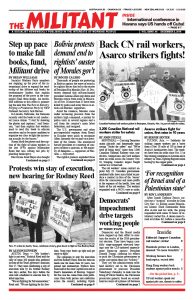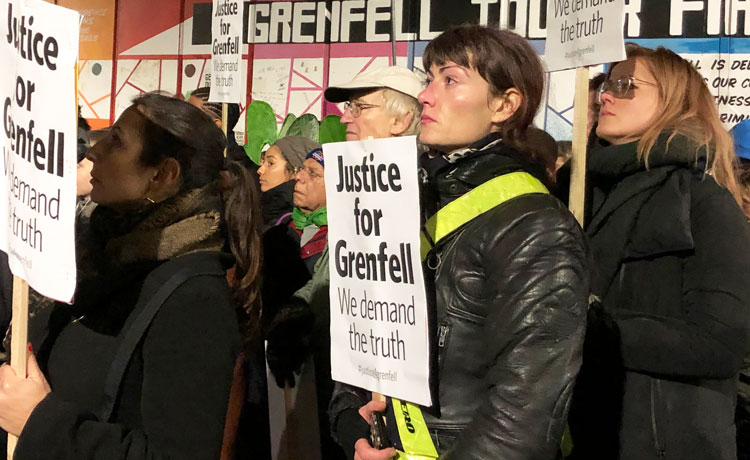LONDON — Hundreds joined a Nov. 14 protest marking the 2017 Grenfell Tower fire in which 72 people lost their lives. The monthly “silent marches” are called by Grenfell United, an organization of residents, their family members and others to press for “no more Grenfells.”
Nearly 40,000 people in the U.K. still live in buildings covered with flammable cladding like that west London tower block. “Nothing will happen unless we fight,” hotel worker Antonio Roncolato, who survived the fire escorted by firefighters from his 10th floor apartment, told the Militant.
“I had to come,” said Daniella Bezzi, a retired journalist from Milan, Italy. “Two young Italians perished in the blaze.” A dozen Fire Brigade Union members traveled from Northern Ireland to attend. The march ended at the “Grenfell wall” where a sign reads: “There’s no justice. There’s just us.”
A report of the first phase of an official inquiry was published days before the march. It reprimands the London Fire Brigade, especially for giving residents “stay put” advice, as the flames engulfed the building.
A second phase of the inquiry will look into the design and management of the building. A police investigation and possible criminal charges will only be considered after that.
Many of the protesters were angered by comments by Jacob Rees-Mogg, leader of the House of Commons, and Andrew Bridgen, chairman of the governing Conservative Party. Rees-Mogg criticized residents for following the “stay put” advice, saying it would have been “common sense” to ignore it. Bridgen added that it was important that “clever people” like Rees-Mogg are running the country.
“Rees-Mogg and Bridgen’s contempt for working people is shared by all capitalist politicians,” said Jonathan Silberman, Communist League parliamentary candidate for Tottenham, who was on the march. “They’re clever. We’re stupid, or backward,” Silberman said. “The fact is Grenfell residents signaled well before the fire that the building was unsafe. Their demands were ignored by the ‘clever’ people running the borough and the country, who allow residential buildings with the same cladding and without sprinklers or adequate evacuation. This will continue until there’s workers control over building construction and safety.”
The day after the march, a student residence in Bolton, near Manchester, also encased in flammable cladding, went up in flames. No one died.
New regulations in the name of safety create a profit-bonanza for construction firms at the expense of working people. At the Stokes Court apartments for the elderly in London’s East Finchley, residents were “informed we each have to pay £7,000 for new doors ($8,975),” by the property’s management company, resident Alan Harris, 83, told the Militant.


